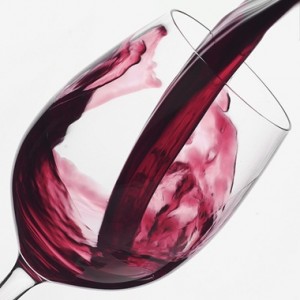
This image is believed to be in the public domain.
Madeline Puckette, the source of wit and wisdom at winefolly.com, a great blog by the way, recently posted 6 Misunderstood Things About Wine.
In the post Madeline covers some “myths” about wine. I don’t know how many of these are actually prevalent myths.
I would like to weigh in on the subject of aging wines. I would guess that 95% of the wines you find at the supermarket, including smaller markets like Trader Joes, Whole Foods, and their ilk, were designed and and manufactured to be consumed within 2 years of purchase. Don’t waste you money by trying to age these wines. They will peak long before you drink them if you put them down to age.
There are really two kinds of wine. Not red and white. They two types are mass produced and small lot. Mass produced wines are the wines you find in the market and populating wine lists at mid-market restaurants. These are like mass produced foods of any kind: deli meats, prepared foods, frozen dinners. They taste just fine. They are made to be consumed. They are not made to be put down in your cellar and age. They will peak within 2 to 5 years of the date on the label. Drink ‘em.
Small lot wines may or may not be made to be aged. I would guess that 60 – 70% of small lot wines are similarly made to be consumed. These are the wines you find at wine stores, on the wine lists of high-market restaurants, and at the small lot wineries themselves. These are wines made at wineries producing less than 25,000 cases of wine a year. If you are buying them at your local wine merchant, or at the winery, ask them if these are wines you can age. These are wines that will have lots of tannin and/or acid when they are young. Those aspects tend to mellow as the wine ages.
I’m a wine snob. I’ll admit it. I’m not a fan of mass production wines. Not all of them, but many of them, are made with chemical additives (only one of over 500 approved additives is required to be included on the label: sulfates). These are wines that are like hot dogs: you really don’t want to see how they are made. It isn’t the romantic, old world wine making of grape juice and native yeasts. It is an ugly, highly processed manufacturing process.
Processing the wines and including all these additives does two things. First, it eliminates the variation from year to year, making the wines more consistent from year to year. Second, it eliminates other kinds of variation, like the natural variations that come because of where the grapes are grown, the terroir, in the wines as well, making them all taste the same. Knocking off the rough edges makes wine dull, and soulless.
I prefer to keep these wines off my table and out of my glass. I think all those chemicals and other processes are likely to be bad for me. I’d rather drink small lot wines where the use of these chemicals and other processes are less likely to happen. Some people call these “natural wines” or “slow wines”. What this does is it means that if I like a wine, it won’t necessarily taste the same from vintage to vintage. It also means that the terroir comes through, so that I can tell an Amador wine from an El Dorado wine, from a Sonoma wine, from a Santa Cruz wine. These variations make wine fun, interesting, soulful.
As wine drinkers, we want to experience the wonderful natural variation in wines that come with different locations, different wine makers, different vintages. Without those variations, it may as well be water or cola.
Related Posts :
I recently read a blog post by the engaging Madeline Puckette, the moving force behind WineFolly ...
I know you await my posts with a fervent desire, for which I am very appreciative. But, sometime ...
Zinfandel Grapes. The image is belie ...


